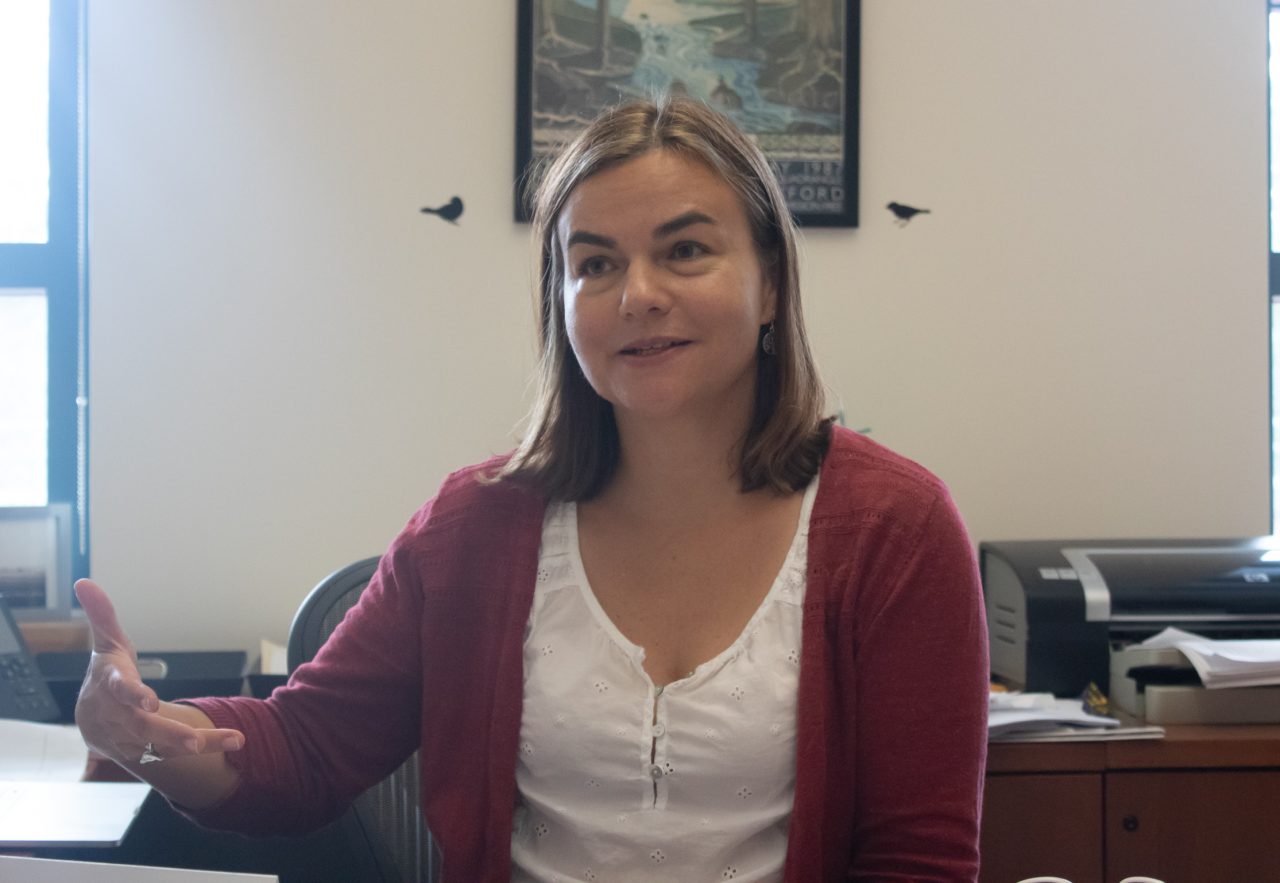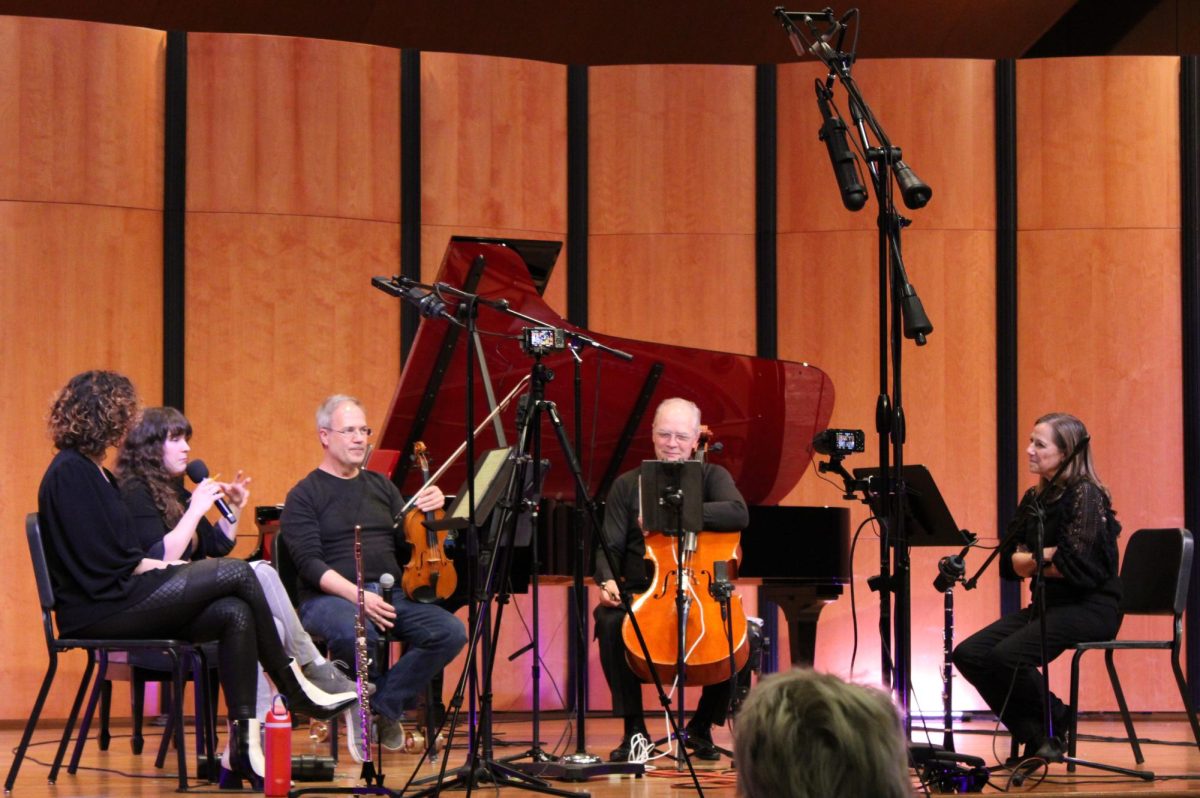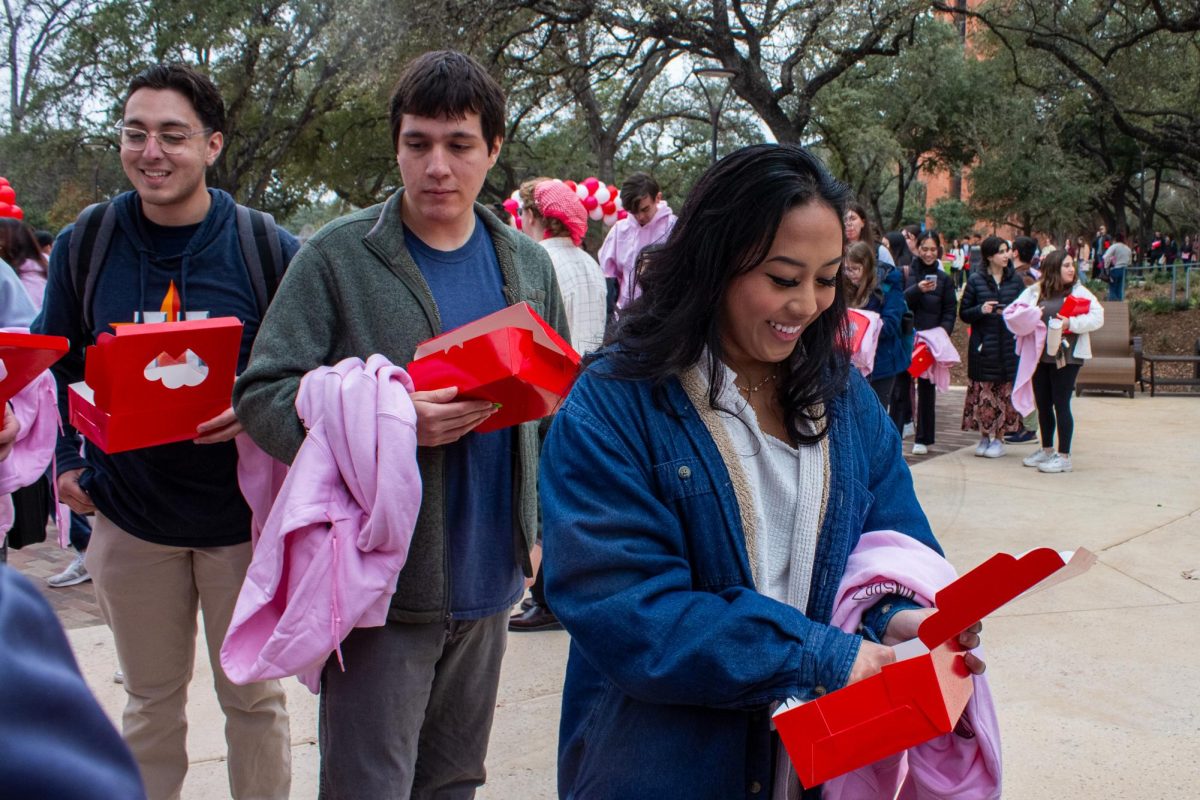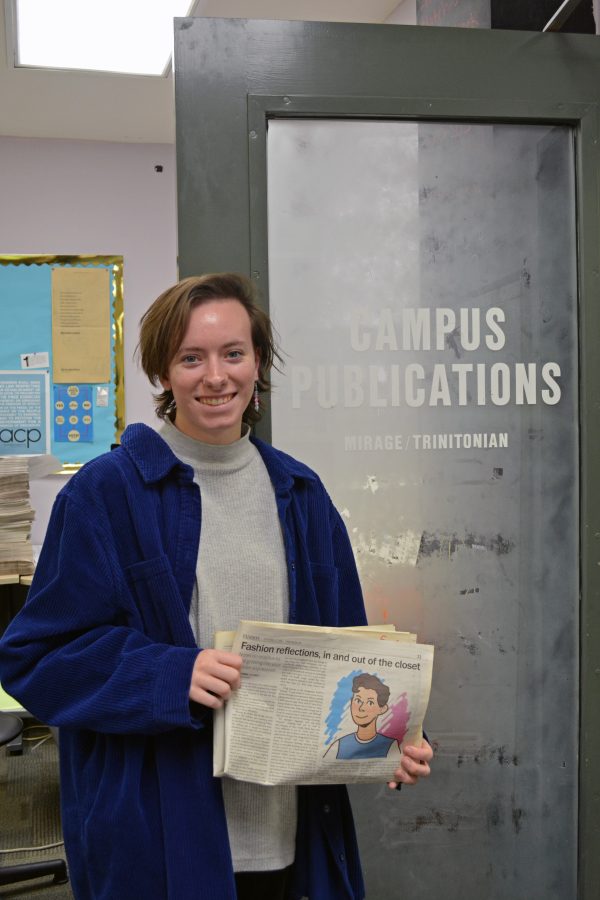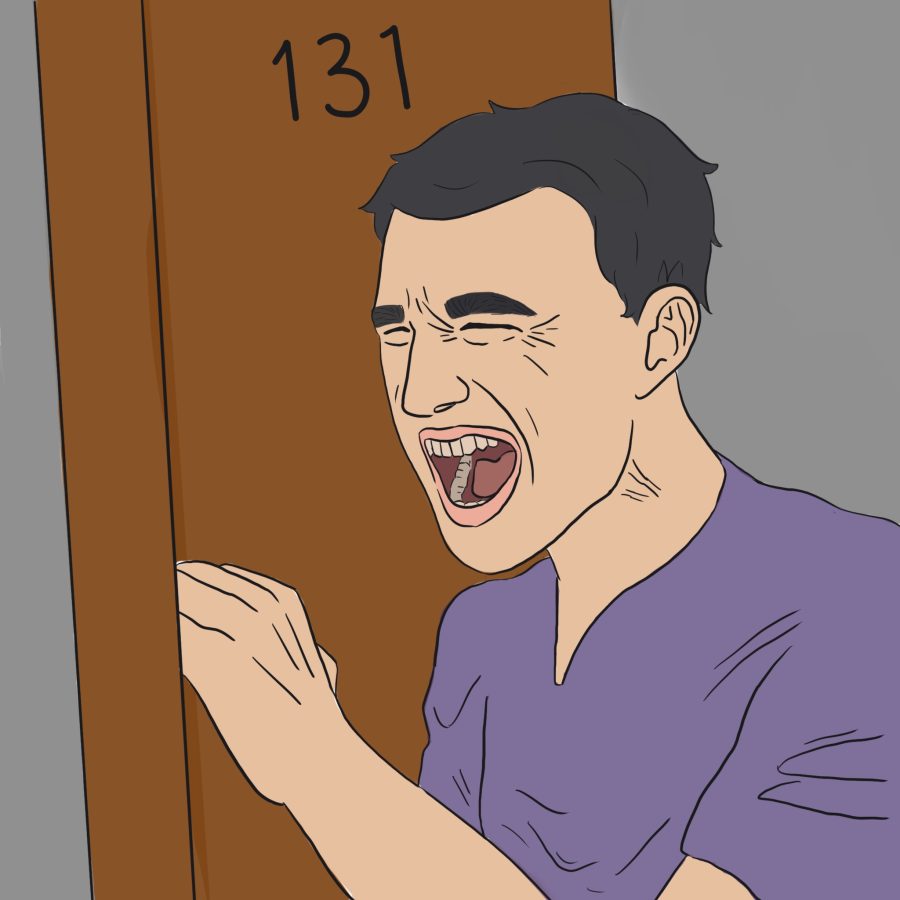Photo by Matthew Claybrook
When you hear the word “sabbatical,” what image comes to your mind? For me, a sabbatical had always meant a wizened old scholar sitting in a high-backed leather chair, staring out the window with a cup of tea close at hand.
I never thought that a sabbatical could mean heading off to England to climb churches, investigate ancient ruins and working on a new book.
But after meeting Kelly Grey Carlisle, a professor of English who specializes in teaching non-fiction writing, I should’ve known better. Carlisle just returned to Trinity after a year of studying and documenting Durham Cathedral.
You just took your sabbatical in Durham, which is in North East England. What were you focusing on while you were there?
Carlisle: I was focusing on Durham Cathedral. I wanted to write [about] a year in the life of this place. Durham Cathedral began in 1093, so it’s really old, but it’s still an active church. About 700,000 people visit every year.
I just have always thought cathedrals were really interesting because they’re these old buildings that are falling down, but they’re still really fully alive.
How did you pick this specific cathedral?
C: Durham, Canterbury and Salisbury were my three choices. Durham was really welcoming and receptive, so I went there. It’s the kind of project that you need people to be on board with.
Would you tell me about some of your experiences there and some things you learned?
C: For the first part of the year, the tower was under repair, and I got to go up to the top with the archaeologists that were repairing it. I was really scared of heights. Other parts of the cathedral are from 1093, but the tower is from the 1500s because lightning kept striking the tower and burning it down.
The wood we were looking at were these huge old beams — oaks that big don’t grow anymore in England.
And carved into it were these folk witchcraft symbols to try and keep it safe since it had burned down three times. And there’s a door, an original door, that’s from 1093.
But you can’t open it anymore, can you?
C: They still use them every day! They’re repairing the outside, but it’s original hardware. Nine-hundred years old. This used to be a monastery, so there’s dormitories and a library and all sorts of things. The monks would all meet in this area called the chapterhouse.
The chapterhouse was a filming location for the Harry Potter films. It was Professor McGonagall’s classroom. And upstairs is the third-floor corridor from [“Harry Potter and the Sorceror’s Stone”], where the scene with Fluffy was, the giant dog guarding the trapdoor.
There was also the quad from the first and second movies, where they play in the snow, but no one’s allowed to go on it. On the last day, I talked them into it, and I just sat there. That used to be where the monks would wash their hands and get ready for supper, so it really wasn’t that special, but now it feels special.
Also there’s the prison cell off of the meeting place where they’d send you if you were bad. But then there’s another one, that now its underneath this big toilet building, but back then it was under the infirmary. No one can go there, but I got the archaeologist to take me.
And it’s kind of beautiful. They even made dungeons pretty. So monks who did something really bad, like knife each other, because apparently that happened, they would be carrying work knives all the time, and sometimes when they’d get mad they’d knife each other. And if you got thrown in this dungeon, you had to be in there for a year. Solitary confinement.
It was lost for centuries, but then they built a stable over it, but they didn’t know it was underground, and a horse fell through. So that’s how they discovered this room.
Wow thats intense. So where were you living when you were over there?
C: I was in a little house about a mile and a half away with my family, who all went, which was cool. My little 8-year-old got to be at Hogwarts for the year. They had a pancake race for Mardi Gras, and I raced in it. And the reason my face looks so tense is because, right then, I tore something in my calf a little bit. All in the service of writing.
And so the book you’ve been writing about Durham — where are you in that writing process?
C: I’ve got about 400 draft pages, 12 books of notes and 11,000 photographs. So this year I’m going to be taking what I wrote, plus my notes, and actually doing the writing and thinking about how to tell the story of a year in a place where you’re a stranger. I came there a stranger, and I left there with very close friends that I love. That’ll be the arc that’ll carry us through the book.
And what are you thinking for the title?
C: Usually the titles just come to me, whatever they are. Right now I wanna call it “Holy Man People.” It’s a reference to the reason they built this cathedral. There was a saint called Saint Cuthbert. In the 800s, the Vikings came and destroyed the monastery that was built around his tomb.
So the monks fled the island and carried his body around for a hundred years, and then they eventually ended up in Durham and built this cathedral around him. These monks were called the Holy Man Folk. So since I’m writing about the people in the cathedral as much as the place, I thought that’d be a good title.
While Dr. Carlisle doesn’t have a final date for when the book comes out, the stories she told me already have me hoping it will be released as soon as possible. Be sure to keep an eye out for Dr. Carlisle’s newest book and through its pages, be transported to the picturesque landscapes of northern England.

